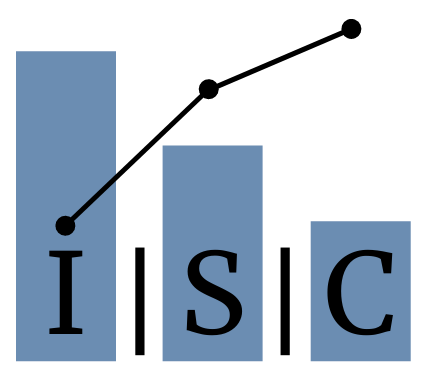Empathy Interviews
Understanding how people experience our systems can provide deep insights into how the system needs to change and can inspire specific changes to make. Empathy interviews are one important way to access and learn from the user experience.
Introduction to Improvement Science
This ~10 minute video provides a broad overview of the foundations of improvement science, including:
Systems Thinking, Understanding Variation, and The Improvement Journey
Exploring the Details of a Single PDSA Cycle
Participants will understand the purpose and parts of Plan-Do-Study-Act (PDSA) cycles, review a PDSA cycle used in practice, and develop the Plan section for a cycle to be tried in a system.
Model for Improvement: PDSA Cycles
Learn about the purpose of Plan-Do-Study-Act (PDSA) cycles and appreciate the deductive and inductive parts of PDSA cycles. Viewers will reflect on who is participating in the improvement journey as well as what methods might be used to source change ideas.
Model for Improvement: Our Engine for Change
Learn about the Model for Improvement, including the use of the ‘three questions’ to organize improvement efforts. Viewers will appreciate the value of the Plan-Do-Study-Act cycle in generating learning about their systems.
Ordered Bar Charts and Pareto
Ordered Bar Charts and Pareto Diagrams help teams focus, providing knowledge on where to change, what issues are common and for who in the system change is needed.
Run Charts
The ability to distinguish real change from random variation in our data is critical to any improvement journey. Run Charts can help bring objectivity to these assessments.
Seeing Inside the System: Process Maps in Action
Analyzing process is not always intuitive. Understanding what questions to apply to process maps can help.
Introduction To Process Maps
Seeing the system creates important insights for teams focused on reducing errors, improving reliability and increasing quality. Process maps are useful tools to help teams get started.
Intro to Improvement Science - Foundational Reading List
A compiled list of foundational reading materials regarding the field of improvement science.
Special Delivery - Change Packages are a powerful starting point for sharing ideas that work
Solutions that deliver results at scale must be simple and sound. For those pursuing organizational improvement, questions remain: How do we codify our solutions?
Are you using data the right way?
How leaders interpret data affects the quality of decision making.
Chartering an Improvement Journey
This video reviews the basic outline of what should be included in a project charter.
Branching Out - Use measurement trees to determine whether your improvement efforts are paying off
When embarking on any improvement project, there are three critical questions team must ask to guide improvement efforts…
Improved Management of Acute Kidney Injury in Primary Care using E-alerts and an Educational Outreach Programme
Acute kidney injury (AKI) detected in primary care is associated with increased morbidity and mortality. AKI electronic alerts (e-alerts) and educational programmes have recently been implemented but their contribution to improve AKI care is unknown. This project aimed to improve response to AKI detected in primary care and used a factorial design to evaluate the impact of the UK National Health Service (NHS) AKI e-alert and AKI educational outreach sessions on time to response to primary care AKI stages 2 and 3 between April and August 2016.
Increasing early childhood education enrollment and attendance rates
This paper reports on a project to increase enrollment and attendance rates at seven early childhood education (ECE) centres in socio-economically deprived areas of Auckland, New Zealand, between January and June 2014. Participating centres used Breakthrough Series collaborative methodology with the Model for Improvement (Langley et al., 2009) to develop and test change ideas according to local context.
Implementation and effects of Enhanced Recovery After Surgery for hip and knee replacements and fractured neck of femur in New Zealand orthopaedic services
The National Orthopaedic Enhanced Recovery After Surgery (ERAS) Collaborative was launched in November 2013 to implement ERAS protocols for hip and knee total joint arthroplasty (TJA) and fractured neck of femur (NOF) in participating district health boards (DHBs) by December 2014. This paper reports on the results.
Primary Care Collaboration to Improve Diagnosis and Screening for Colorectal Cancer
Colorectal cancer (CRC) screening helps achieve early diagnosis and better outcomes, yet many patients fail to receive recommended screening. As part of an academic improvement collaborative, 25 primary care practices worked to improve CRC screening and diagnosis. The collaborative effectively engaged teams in a broad set of process improvements with key lessons learned related to barriers, information technology challenges, outreach challenges/strategies, and importance of stakeholder and patient engagement.
Target CLAB Zero: A national improvement collaborative to reduce central line-associated bacteraemia in New Zealand intensive care units
Central line-associated bacteraemia (CLAB) is a preventable cause of patient morbidity and mortality in intensive care units. Target CLAB Zero was a national campaign that ran from October 2011 to March 2013 across all New Zealand ICUs (intensive care units). The campaign aimed to reduce the national CLAB rate to less than one incident per 1,000 line days and to establish a national measurement system for CLAB.
What's your theory? Driver diagram serves as a tool for building and testing theories for improvement
A driver diagram is an applicable tool for many contexts, from improving process reliability to redesigning a service to creating new products to generating enhanced user experience.




















